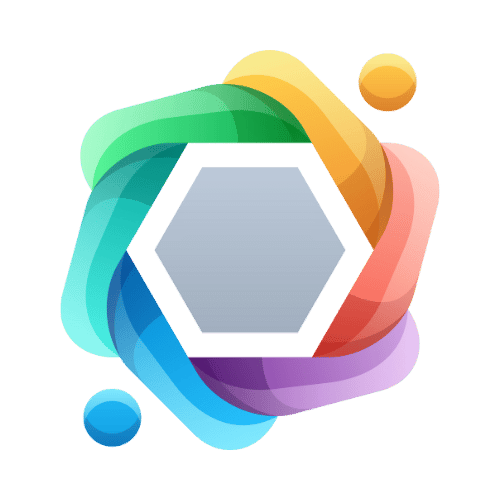A tech stack is vital for software developers and businesses. It’s a group of software parts that create a working app.
Tech stacks have key building blocks for app layers. These parts include programming languages, databases, and web servers.
This is a visually layered illustration representing a tech stack, featuring interconnected blocks symbolizing different software components like databases, servers, programming languages, and user interfaces. Vibrant colors and modern design elements convey complexity and integration, with abstract shapes and lines cohesively connecting each layer. The illustration emphasizes a futuristic and digital aesthetic without including any text or characters.
Understanding tech stacks is crucial in today’s digital world. It shapes how apps are made and how well they work.
Picking the right tech mix is essential. It helps create strong apps that can grow and change.
Understanding the Concept of a Tech Stack
A tech stack is key for building software apps. It’s a mix of coding tools used to create software.
The right tech stack can boost app performance. It can also help with scaling and success.
A tech stack includes many software products. These tools work together to make a complete solution.
It has front-end and back-end parts. It also includes databases and support tools.
Picking the right tech stack is very important. It affects how well the app works and how easy it is to build.
A good tech stack helps make great software. It can help businesses stay ahead of others.
The Different Layers of a Tech Stack
A tech stack is a group of software parts. These parts work together to run a digital app.
Let’s look at the main layers of a typical tech stack. Each layer plays a key role.
The front-end layer handles what users see and touch. This includes the look and feel of the app.
HTML, CSS, and JavaScript are standard front-end tools. React, Angular, and Vue.js are popular frameworks.
The back-end layer works behind the scenes. It deals with user requests and manages data.
Python, Java, and Node.js are common back-end languages. Django, Spring, and Express are practical web frameworks.
The database layer stores and manages app data. There are two main types of databases.
Relational databases include MySQL and PostgreSQL. NoSQL databases include MongoDB and Cassandra.
The server infrastructure layer hosts and runs the app. It includes web servers and cloud services.
Knowing these layers helps developers choose the right tools, and it allows businesses to make smart choices for their projects.
Popular Tech Stacks in the Industry
Tech stacks help build cool new things. MEAN, LAMP, and MERN are top picks for making great apps.
MEAN uses MongoDB, Express.js, Angular, and Node.js. It’s great for making fast, fun apps that work in real time.
A vibrant digital landscape showcasing the MEAN stack components: a MongoDB database represented as a lush green tree with data nodes, an Express.js framework visualized as intense architectural beams supporting a structure, an Angular front-end depicted as colorful geometric shapes dynamically interacting, and a Node.js server illustrated as a sleek modern tower with pulses of energy flowing through it. The scene is set against a futuristic city skyline, filled with glowing connections and abstract data streams, all infused with a tech-inspired color palette.
LAMP stands for Linux, Apache, MySQL, and PHP. It’s good for large, safe websites like online shops.
MERN has MongoDB, Express.js, React, and Node.js. It makes apps that look nice and work well on one page.
Each stack is suitable for different things. The best choice depends on what you need.
Think about your project and team. Pick the stack that best fits your app.
How to Choose the Right Tech Stack
Picking the right tech for your project is vital. It can make or break your success.
Look at what your project needs. Think about features, security, and how data will be managed.
Check your team’s skills. Choose tech they know well. This will help them work faster.
Look for tools that can help your team. These include libraries and frameworks.
Think about growth. Pick tech that can handle more users and data.
This helps avoid costly changes later. The right tech can open new doors for your business.
Common Challenges with Tech Stacks
Tech stacks can be tricky to develop and manage. Connecting different parts often causes integration problems.
Good planning and talking help solve these issues. This ensures data flows smoothly across the tech stack.
Making tech stacks work well can be challenging. Developers must watch system stats and fix slow parts.
They can use caching and load balancing. These methods help make the system faster.
Old systems can be challenging to add to new tech stacks. They may need more instructions to use updated methods.
Fixing this takes careful planning and testing. Moving to newer solutions bit by bit often works best.
Solving these issues helps tech stacks work better. It makes systems more reliable and flexible.
Using modular design and constant checks can help. These methods build stronger tech solutions.
The Future of Tech Stacks
Tech stacks are changing fast with new and exciting advances. Cloud-native development and microservices are reshaping how we build apps.
These new methods help businesses work better and faster. They make it easier to grow and change as needed.
Cloud-native development is a big step forward. It lets companies use cloud power to create and run their apps.
This approach makes it easier to grow and uses less hardware. In the future, more businesses will use cloud-native ideas.
Microservices are also changing tech stacks. They break big apps into smaller, separate parts.
This makes it easier to be flexible and work faster. Teams can use the best tools for each part.
As more people use microservices, tech stacks will change, too, creating a more flexible system for everyone.
FAQ
What is a tech stack?
A tech stack is a mix of software tools. It includes languages and frameworks used to build apps.
Why is a tech stack critical?
A good tech stack helps create successful apps. It boosts performance and teamwork.
What are the different layers of a tech stack?
Tech stacks have several layers. These include front-end, back-end, database, and server parts.
Each layer has an exceptional job. Together, they make the app work well.
What are some popular tech stacks in the industry?
Popular stacks include MEAN, LAMP, and MERN. Each stack has its strengths.
They are used for different types of projects.
How do I choose the right tech stack for my project?
Think about your project needs and team skills. Consider how big your app might grow.
Pick a stack that fits your business goals. Make sure it can support your app’s features.
What are some common challenges with tech stacks?
Developers may face issues with linking different parts. They might need help to make things work fast.
Clever design and testing can help solve these problems.
How is the tech stack landscape evolving?
New tech like cloud and serverless are changing stacks. These offer new ways to make apps better.
They help make apps more flexible and efficient.
you may also read : Everything You Need to Know About ZTec100.com: The Gateway to Innovation and Technology



